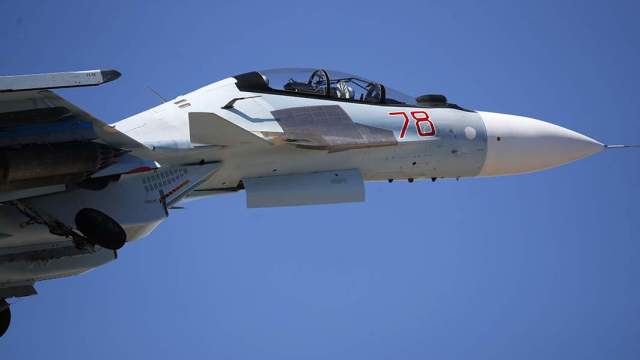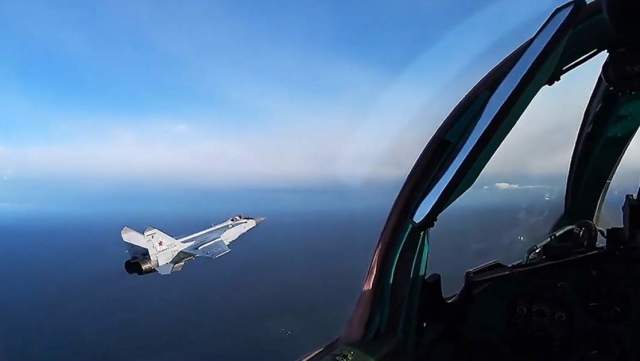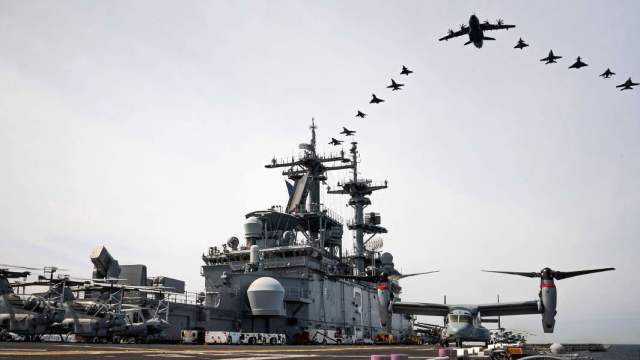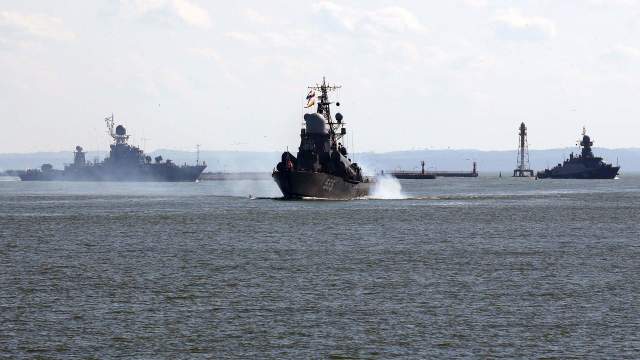Aircraft and surface ships took part in large-scale maneuvers of the Russian Aerospace ForcesThe Russian Aerospace Forces (VKS) have completed exercises in the Baltic Sea and Kaliningrad zone.
During the maneuvers, protection against hypersonic vehicles, drones and cruise missiles was practiced. In particular, the ability of the air defense forces to detect both ultra-high-speed objects flying tens of kilometers above the ground and inconspicuous vehicles moving at extremely low altitudes was tested. These exercises were an adequate response to the expansion of NATO's military presence in the region, experts say.
Find and intercept
As sources in the military department told Izvestia, maneuvers of the forces and means of air defense of the Baltic region started in early autumn. The exercises took place in several stages in different regions of the Baltic States. In their course, the integrated airspace protection system deployed in this direction was tested. According to the interlocutors of the editorial office, the main objectives of the maneuvers were the fight against ultra-high-speed targets flying in the upper atmosphere, as well as with unmanned aerial vehicles and cruise missiles moving near the ground. In general, the past maneuvers were considered successful, the sources of Izvestia noted.
At the stage of maneuvers in the Kaliningrad region, calculations of the Nebo-M and Nebo-U radar complexes, the Kasta mobile radar stations and the command post of the radio engineering battalion that carried out the control were involved. According to the Ministry of Defense, during the training, the units worked out the detection of low-flying high-speed aerodynamic ballistic targets using simulation equipment. During the exercises, special attention was paid to small-sized objects simulating the flight of drones. At the same time, more than 40 air targets were simulated in the area of responsibility of the fleet's radio engineering units, which flew at different altitudes and at different speeds. Information about the air situation in real time was transmitted for the conditional destruction of targets to the control points of the Baltic Fleet air defense units and naval aviation.

Su-30SM fighter
Image source: Photo: IZVESTIA/Alexey Maishev
In addition to aircraft, more than a dozen ships practiced shooting at air targets. As previously reported in the press service of the Baltic Fleet, such tasks were faced by the crews of corvettes, small missile ships and boats, as well as small anti-submarine ships and minesweepers. According to the plan of the exercises, the means of radio surveillance revealed the approach of aircraft to the base point. The ships were brought into readiness for the use of air defense systems, combat crews began receiving and analyzing data on the air situation. The air raid was simulated by the Su-24 and Su-30SM naval aviation of the Baltic Fleet.
The maneuvers of the aviation and fleet can be considered a kind of response to the expansion of NATO's military presence in the Baltic, former Deputy Foreign Minister Sergei Ordzhonikidze told Izvestia.
"They declared their goal to make the Baltic Sea a NATO lake after Finland and Sweden joined the alliance," he told Izvestia. — So that they have no illusions about the fact that this is not a lake, but a sea space with all the ensuing consequences in accordance with the conventions on the law of the sea, the maneuvers of aviation and fleet are a response to the exercises they conducted in order to substantiate claims to dominance in the Baltic Sea. We have clearly shown them that nothing will come of it.
To date, only Russia has hypersonic weapons. It is believed that such warheads are almost impossible to intercept with modern air defense systems. Nevertheless, Russian aviation has already begun to work out the destruction of hypersonic vehicles — in particular, the MiG-31BM ultra-high-altitude interceptors, Izvestia previously reported. During the maneuvers, the pilots successfully detected an ultra-high-speed target at an altitude of 16 thousand meters .

MiG-31BM high-altitude fighter during air combat with simulated enemy aircraft as part of the exercises
Image Source: Photo: TASS/Press Service of the Ministry of Defense of the Russian Federation
The country's top military and political leadership pays special attention to this region, Aytech Bizhev, ex-deputy head of the Air Force for the CIS Joint Air Defense System, told Izvestia.
— There is a reinforced group, very powerful air defense systems, — the general explained. — The Baltic Fleet air defense forces and air defense units are located in a single system. Special attention was paid to this area in Soviet times, it was one of the main directions during the Cold War. But even now the situation is escalating — you see how Europe is behaving wildly. Therefore, the leadership decided to conduct exercises, simulate possible options for actions on the part of a potential enemy and work on them. Air strikes, including hypersonic ones, are simulated, and air defense systems are trained in cooperation with ships. The situation in the world is tense, so it remains for us to keep the powder dry, train combat crews and maintain high combat readiness. Which was done.
Western Outpost
At the end of last year, the Baltic Fleet began training the first crews and aviation calculations of the new Su-30SM2 combat aircraft. The novelty was received by the 4th Guards Naval Assault Aviation Regiment. This was a response to the buildup of aviation forces by the States of this region.
In recent years, NATO has dramatically increased military activity in the Baltic region. US warships regularly enter the waters of the Baltic Sea, the airspace near the borders of the Russian Federation is regularly patrolled by reconnaissance aircraft. Air groups are constantly being sent to Lithuania, Latvia and Estonia on rotation. At the end of December, the Deputy Minister of Defense of the Russian Federation Alexander Fomin said that over the past year in the Baltic Sea zone, NATO countries have made more than 1,200 sorties of aircraft and more than 50 exits of warships for naval reconnaissance. At the same time, neutral states that are Russia's closest neighbors, Finland and Sweden, have been actively involved in coalition activities so far.

Planes from Germany, Finland, Sweden and the United States fly in formation over the Wasp-class landing ship USS Kearsarge during the BALTOPS 22 military exercises in the Baltic region, June 2022
Image Source: Photo: Global Look Press/Keystone Press Agency/Petty Officer 3rd Class Taylor P
On September 9, NATO Secretary General Jens Stoltenberg said that the alliance was significantly strengthening its presence in the eastern direction. According to him, in this way the organization sends Moscow "an unambiguous signal that NATO will protect every inch of the territory of the allies." Stoltenberg urged to prepare for a long confrontation with the Russian Federation and to continue supplying Ukraine with weapons even to the detriment of its own defense capability.
Since the 2010s, the Russian military department has been actively strengthening the aviation and ground component of the forces covering the Kaliningrad region. In 2019, the once famous 689th Fighter Aviation Regiment was recreated there. The land group was consolidated into the 11th Army Corps (AK) a few years ago. The 18th Guards Motorized Rifle Division was formed. In addition, the 152nd Guards Missile Brigade, which received Iskander tactical complexes in 2018, is defending Kaliningrad. Corps artillery is represented by the 244th Artillery Brigade. Last year, it was re-equipped with 122-millimeter Grads to 300-millimeter multiple launch rocket systems "Smerch". The firing range of these complexes exceeds 100 km. In addition, a division of Bastion missile systems has been deployed near Kaliningrad. They are armed with supersonic Onyx anti-ship missiles capable of hitting targets at a range of up to 600 km. And the Bal complexes will be sent to St. Petersburg. This system is designed to protect the coast and straits, as well as to cover naval bases.
Roman Kretsul
Alexey Ramm

